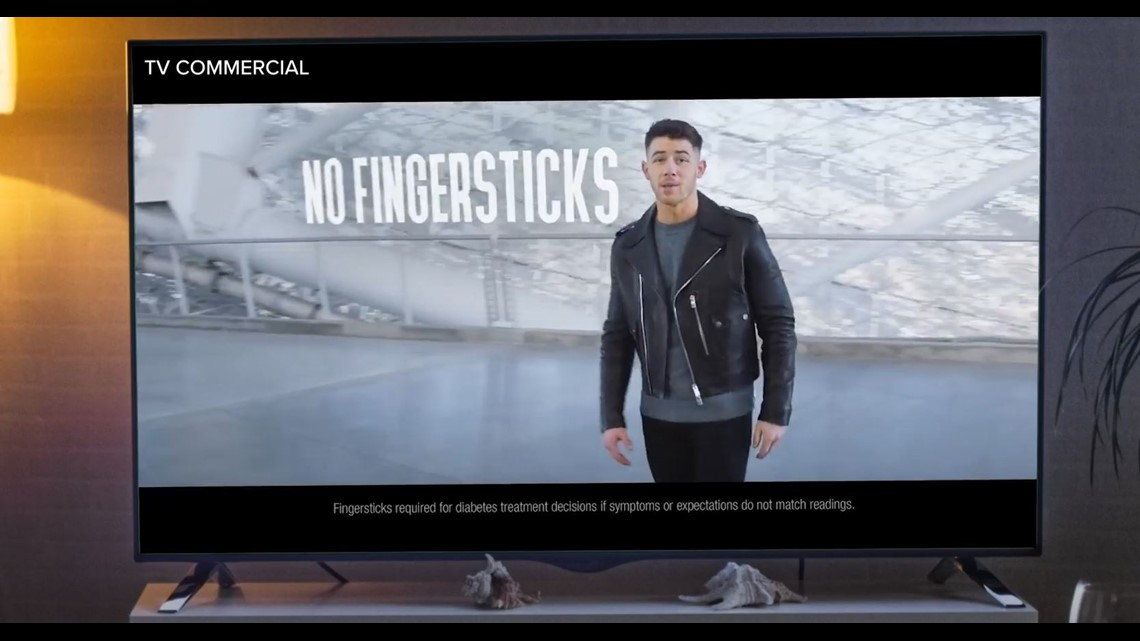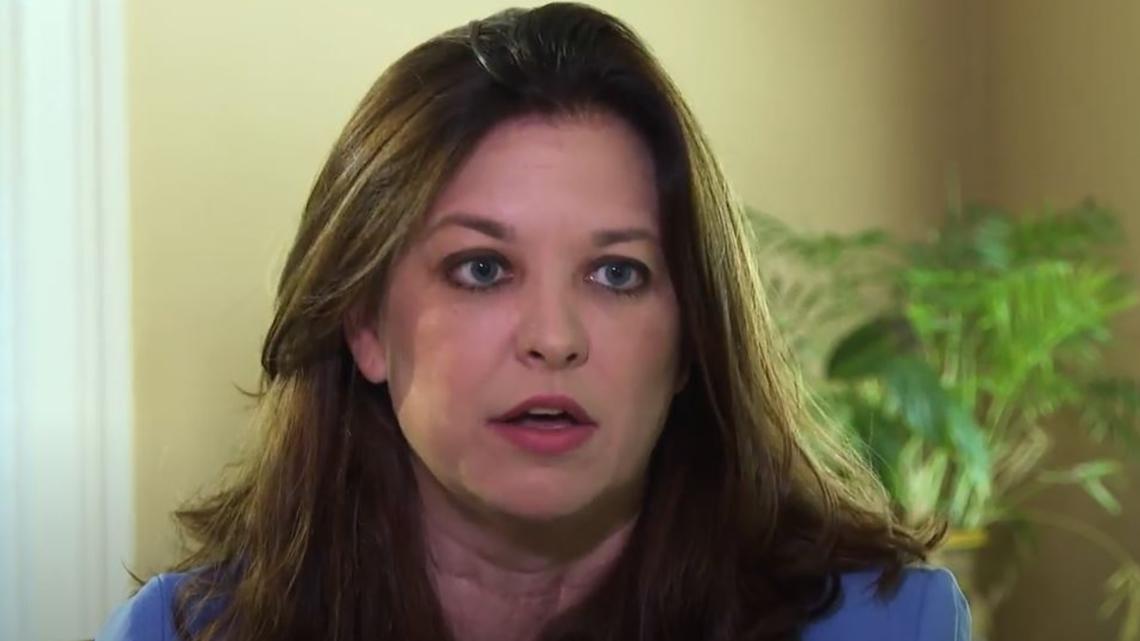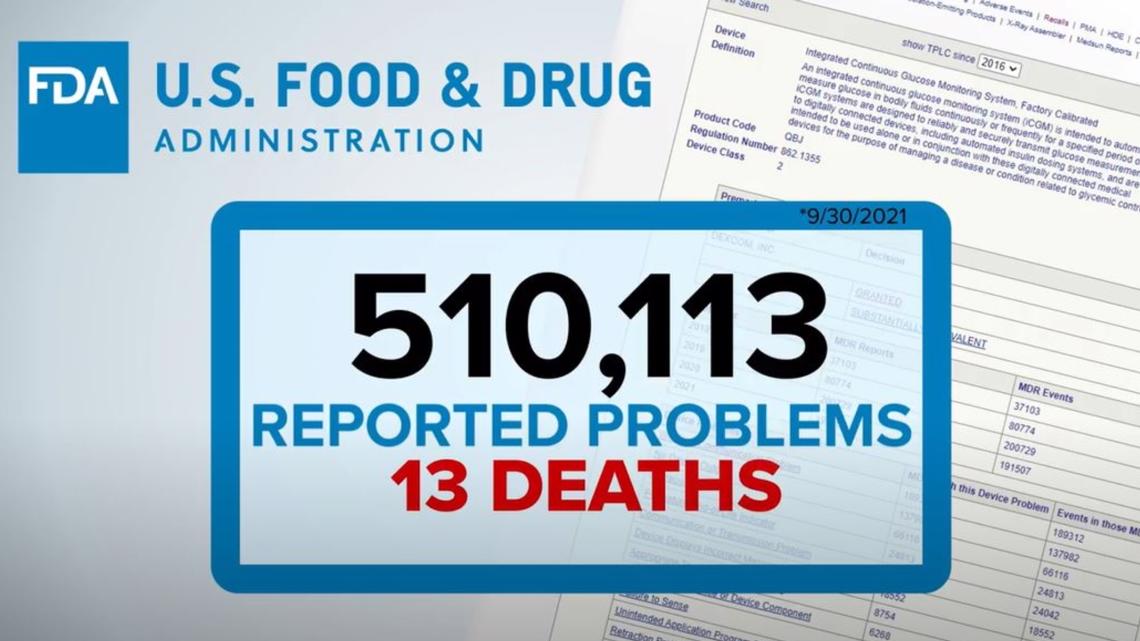ATLANTA — When Julie Tuttle watched the 2021 Superbowl from her living room between the Tampa Bay Buccaneers and the Kansas City Chiefs, she nearly turned the television off.
However, it wasn't the game that frustrated her, but rather a 30-second TV commercial about a glucose monitoring device called the Dexcom G6 that made her look the other away.
"It was not pleasant. Not at all," Tuttle said during an interview this past August.
The commercial featured music pop star Nick Jonas, a Type 1 diabetic, promoting the device as a transformative technology that essentially eliminates pesky finger sticks, which people with diabetes have used to check their blood sugar levels for decades.
"We have self-driving cars, robots that vacuum…we visited Mars, and [we're still using] finger sticks, really?" Jonas said in the commercial. "Meet the Dexcom G6. It shows your glucose right in your phone and where it's heading, without finger sticks."
However, while the commercial hails the G6 as the future of treating diabetes, Tuttle believes the device contributed to her husband's death.


On November 9, 2019, Tuttle and her late husband, Michael, were watching college football. Julie went to bed early, but Michael kept watching the game.
When she woke up the following day, Julie heard him snoring, but something was off. "I could kind of tell as I started to walk down the hall, this doesn't sound right," Tuttle said.
She tried to make Michael wake up, but it didn't work. When paramedics arrived, they checked his blood sugar and the results were alarming.
"I know it was low because I remember gasping, like, 'That's so low,'" Tuttle recalled. Doctors diagnosed Michael with Type 1 Diabetes at 38-years-old, an unusual age to develop the disease.


Tuttle said her husband used the G6 and other Dexcom devices for years, including the G4 and the G5.
According to videos posted on Dexcom's YouTube page, there are three main components of the G6. The first includes a sensor typically connected to a user's abdomen, which pierces through the skin and into the interstitial fluid.
That sensor is connected to a transmitter with blue tooth technology, which wirelessly connects to an application downloaded on a user's phone. The phone app displays the user's blood sugar level and is updated every five minutes.
In its advertising and product details posted online, the G6 makes two big promises. It will sound an alarm when a user's blood sugar gets too low or too high or if anything goes wrong with the app.
However, Michael's alarm didn't go off until after he was already at the hospital.
"I remember asking the paramedic when I got there if he had woken up in the ambulance, and he said that he [Michael] didn't," Tuttle explained.
The father of two died 10 days later from hypoglycemia. He was 48-years-old.
"This product was encouraging people to rely on it not only for accurate readings but for alerts," attorney Natalie Woodward said. She, along with Brian Cathey, is representing the Tuttle family in a wrongful death lawsuit. "It failed all of those things at a time when [Michael] needed it the most."
However, suing a company that has received the FDA's blessing to sell medical devices to the public is difficult. Once approved, companies are often immune from many forms of litigation, shielding them from liability even when something goes wrong.
But so far, Tuttle's lawsuit is still happening. While Honorable Leigh Martin May threw out the claim seeking punitive damages, the federal judge in the Northern District of Georgia issued an order allowing the lawsuit to move forward, at least for now.


"The aspect of handing immunity over under any scenario to a publically traded company should be something that should give all of us concern," Woodward said.
The Reveal requested an interview with Dexcom officials and its attorneys multiple times over the past month. While they didn't respond to us, the company denies any wrongdoing in a court filing while responding to Tuttle's lawsuit.
Device Complaints
The Food and Drug Administration authorized the G6's request for retail sale in 2018.
Since then, the agency has received more than half a million reports of problems, 13 of which are linked to deaths. The majority of the issues are identified as "wireless communication problems."
Ray Lloyd is one of those who filed a complaint with the FDA nearly two years ago. The Atlanta resident said he noticed the problem within days of using the G6. "It was continuously saying it was out of range," he explained.


Lloyd added that he reached out to Dexcom multiple times but didn't get a response from the company until after he filed his FDA complaint.
He still uses the device but said he can't trust that it works as advertised. "There are some disclosures I believe that the consumers should have and be aware of because the device is not full proof. It can definitely misfire," Lloyd said.
In 2016, the American Medical Association published an article highlighting problems with a previous Dexcom model, the G5.
The article titled "FDA Approval of Nonadjunctive Use of Continuous Glucose Monitors for Insulin Dosing A Potentially Risky Decision" notes the agency received at least 65,000 reports of inaccurate blood glucose readings from October 1, 2016, to June, 2017. The author, Dr. Alan Shapiro, said the FDA panel that approved the device was not provided the data before making its decision.
"I discovered that there were many instances, many reports of inaccuracy," Shapiro said in a Zoom interview with the Reveal over the summer.
Shapiro said he wrote the FDA three letters voicing his concerns, but no one responded. The FDA granted the G5's authorization about three months later.
Attorney Brian Cathey said what makes the G6 exceptionally different than the previous models is that Dexcom was actively encouraging users to get away with using finger sticks, even though consumers continued to report problems.
"A simple finger stick on the night of Michael Tuttle's incident would have alerted him to his hypoglycemia and let him take action so he would not have had an issue," Cathey added.


The day Michael died, the FDA issued a recall of the G6's phone application software. Dexcom addressed it by updating its app. It remains on the market today.
"I couldn't believe it. I mean, just how ironic is that on the day he dies, there's a recall. It was shocking," Tuttle said.
The FDA's Response
The agency declined our request for an interview.
In a statement released to the Reveal, the FDA said it "takes medical device reports (MDRs) and other reports of safety issues with medical devices very seriously."
MDRs are reports of problems or complaints sent to the agency by many sources, including consumers, doctors and device manufactures. While the FDA makes the data available, it cautions using it to interpret the safety of a device. "Although medical device reports are a valuable source of information, this passive surveillance system has limitations, including the potential submission of incomplete, inaccurate, untimely, unverified, or biased data," the agency wrote.
The FDA doesn't think the more than half-million reports connected to Dexcom's G6 is a lot, either. It also has no threshold of how many complaints it receives about a device before taking action.


"The number of MDRs we have received for the Dexcom G6 CGM (continuous glucose monitor) is consistent with the frequency of use, as patients will use the device 24 hours a day and, according to the U.S. Centers for Disease Control and Prevention, more than 30 million people in the U.S. have diabetes, which represents 9.4% of the overall population," wrote the FDA spokesperson.
The FDA also said it is aware of Dr. Shaprio's concerns and his published JAMA article. It claims the panel, which approved the G5, knew about "all relevant MDRs," before making its decision.
According to a transcript of a FDA advisory committee meeting on July 21, 2016 about the G5, a doctor raised concerns about the high number of MDRs reported to the agency. "I was actually struck by the rate," Dr. Robert Burr, a temporary member of the FDA panel at the time.
Dr. Sayce Beck, a division chief in the agency's Diabetes Branch, provided context to those numbers.
'I do want to caution that when you look at just the base numbers, it's very hard to determine the actual reason for those," said Beck. "So I don't think we saw numbers that are outside of what we see with other types of devices."
Simply put, the FDA isn't taking action.
Correction: This story previously reported transcripts of a FDA committee meeting about the G5 were only available through public records request. Those transcripts are available online. A link to that transcript is provided above.

